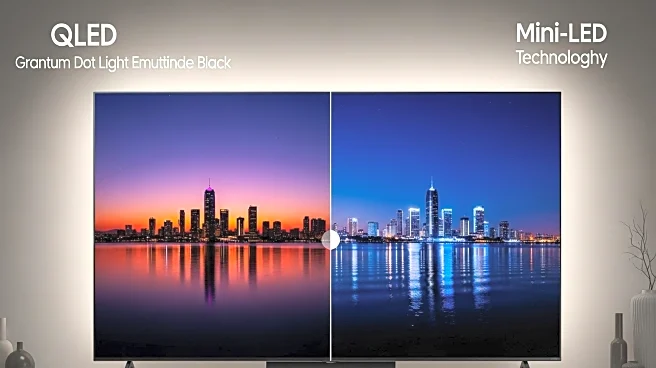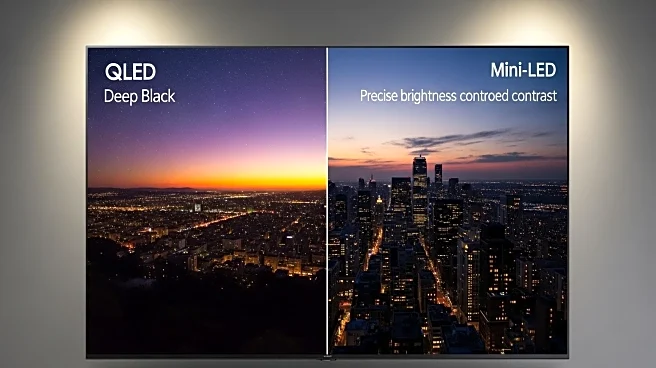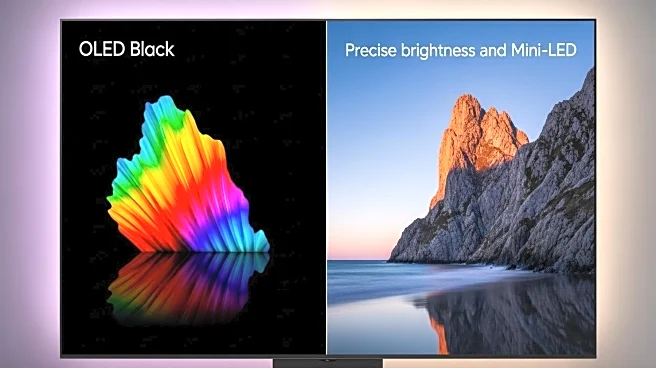What's Happening?
CNET has published a detailed comparison between LCD and OLED TV technologies, focusing on their respective strengths and weaknesses. LCD TVs, also known as LEDs or QLEDs, use a Liquid Crystal Display with a separate LED backlight, while OLED TVs use organic light-emitting diodes where each pixel provides its own illumination. The article highlights that OLED TVs offer superior picture quality due to their ability to produce perfect blacks and high contrast ratios. However, LCD TVs are generally more affordable and can offer higher brightness levels, making them suitable for well-lit environments. The comparison also covers aspects such as resolution, refresh rate, viewing angle, and energy consumption, providing a comprehensive guide for consumers looking to purchase a new TV.
Why It's Important?
The comparison between LCD and OLED technologies is crucial for consumers and the TV industry as it influences purchasing decisions and market trends. OLED TVs, with their superior picture quality, are often preferred by enthusiasts and those seeking the best visual experience. However, the affordability and brightness of LCD TVs make them a popular choice for the average consumer, especially in larger sizes. This ongoing competition drives innovation and price adjustments in the TV market, impacting manufacturers like LG and Samsung, who produce OLED panels, and various companies across Asia that manufacture LCD panels. Understanding these differences helps consumers make informed choices based on their viewing preferences and budget constraints.










